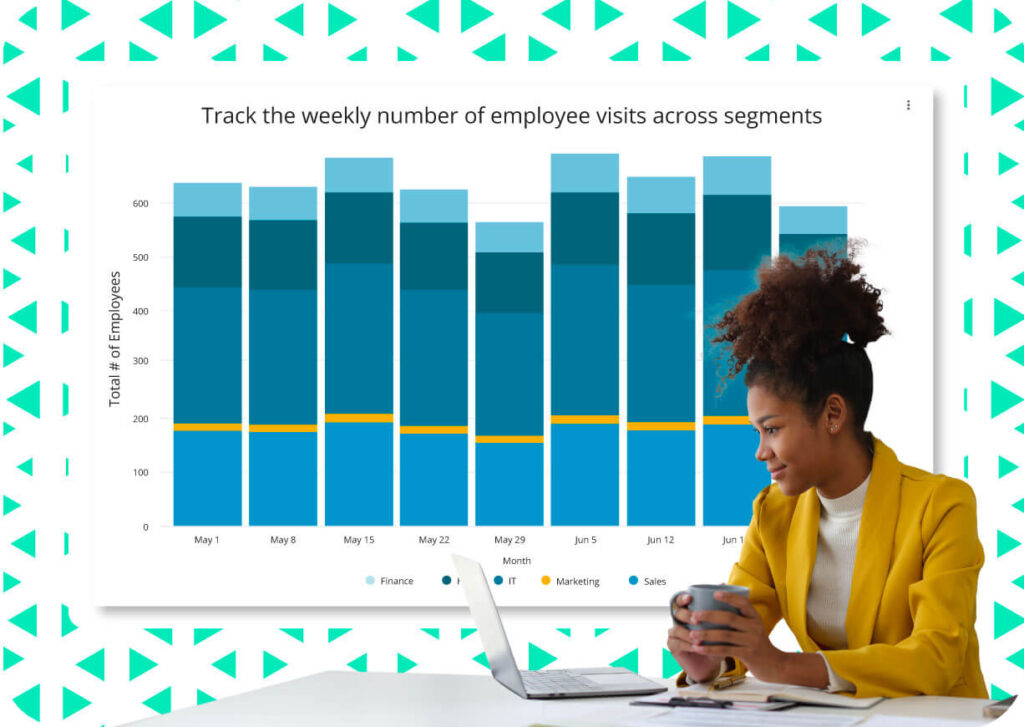How Facility Managers Can Leverage Microsoft Workplace Analytics
By Nick Mason• 3 mins read•September 12, 2017


Imagine you could learn which techniques your most productive employees are using throughout the day? Or understand which teams are working together most efficiently? Microsoft’s new Workplace Analytics system allows you to do just that. Using Office365 data sources, such as email and calendar metadata, Workplace Analytics allow you to draw insights on users’ productivity, efficiency and behavioral patterns. Facility managers can use Workplace Analytics to shed light on a number of important operational elements and better understand how their organization works together.
Team collaboration

As a manager, you want to make sure your team is working as effectively as possible. Workplace Analytics can be used to gather insights about team collaboration patterns, meeting durations and frequency of interactions between departments. For example, using Workplace Analytics, you can track how many hours teams spend collaborating, the average length of meetings and the related costs to any given department. This information can then be used to identify which meetings are an inefficient use of your employees’ time, and how you can encourage higher performance.
Collaboration data can also be used to group teams in a space or determine the number of resources needed and where to situate them. FMs can help reduce travel times to meetings or within departments by strategically placing groups in a specific area.
This is helpful for companies conducting large moves—using data to make decisions can reduce unknowns in a new office space and bring structure to the process.
It’s important to note that this data should be considered alongside other sources. Checking in with individual teams or employees to learn which processes they find most effective will provide extra color to justify the data, and allow you to make decisions that benefit both your employees and the bottom line.
Requests and inquiries
Repeated requests for specific equipment, rooms or maintenance may follow a pattern that managers can track and plan for ahead of time. Using Workplace Analytics can help address these issues with a better sense of objectivity and provide FMs with the necessary information to convince stakeholders where larger investments are required to ensure long-lasting solutions. For instance, if departments who onboard more staff routinely need additional resources, like printers, paper and extra monitors, you can anticipate these requests and get management to sign off on new devices beforehand. Similarly, if equipment around the office purchased 5 years ago is breaking, you can schedule routine repairs on all items purchased around that time, and assess whether or not office-wide upgrades are necessary. Having request and maintenance data on hand allows you to troubleshoot before mistakes and breakdowns occur.
Pinpoint cost savings and investments

Workplace Analytics can help improve resource planning and guide FMs on where to save and invest in the office. Managers should look for data insights relating to how staff spend their time, what tools they use and other patterns in their work routines. This information can help determine important factors such as when to reduce energy use in the office. Employee turnover is another huge cost for organizations. Workplace Analytics can help managers understand the effectiveness of leaders in their organization and determine which individuals are contributing to employee retention. These behaviors and practices can then be shared company-wide or with specific leaders who are looking to improve retention rates in their department.
Microsoft’s Workplace Analytics brings a data-based approach to understanding staff behavior in the office. It’s a tool that offers FMs a holistic view of office processes and space management and provides great insights about overall productivity. Combining this data with comprehensive facility management software can give you a new degree of insight into your organization.
Managers who pair their Workplace Analytics data with OfficeSpace reports and analytics stand to gain the most out of their employees and their office. Learn more.
Photos: Shutterstock / Jacob Lund, Shutterstock / Goran Bogicevic, Shutterstock / Dean Drobot




